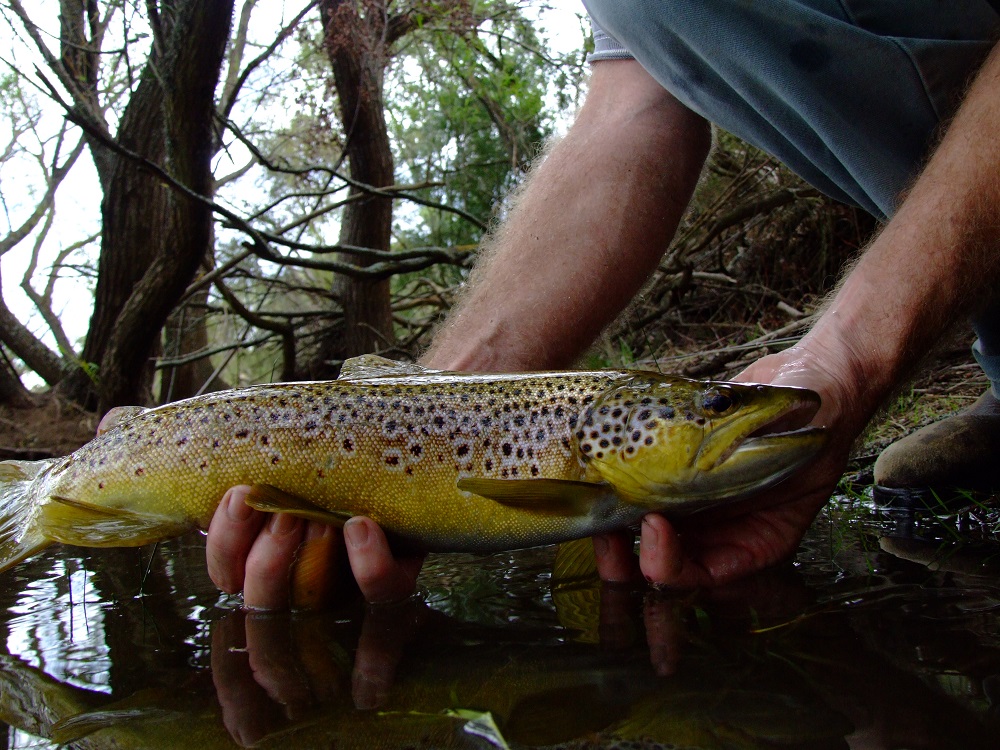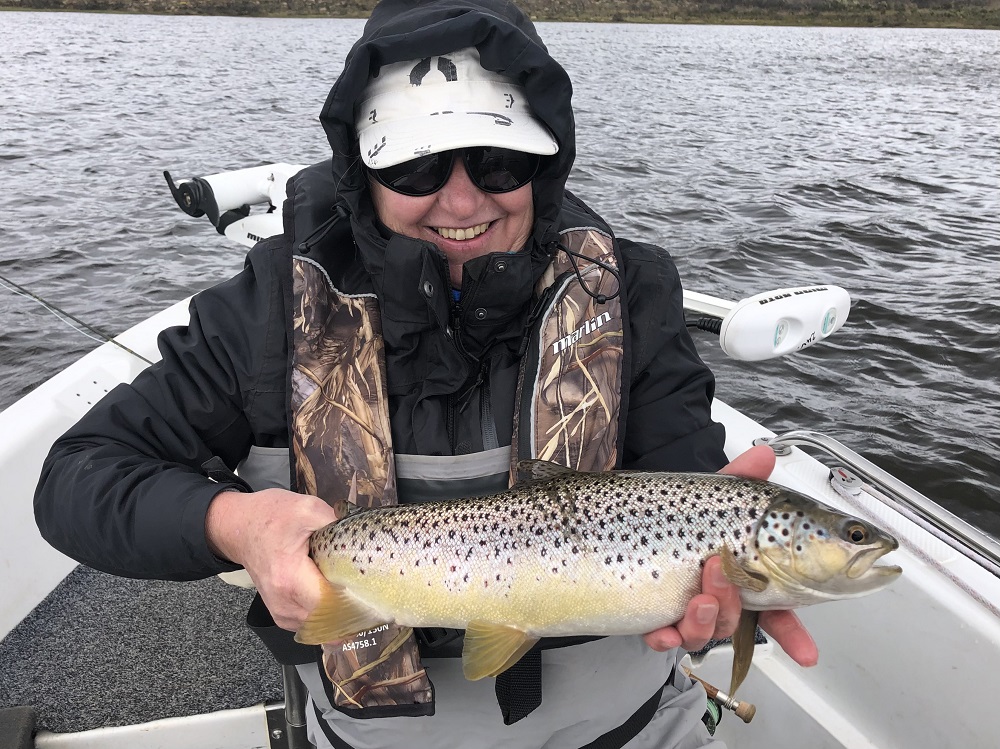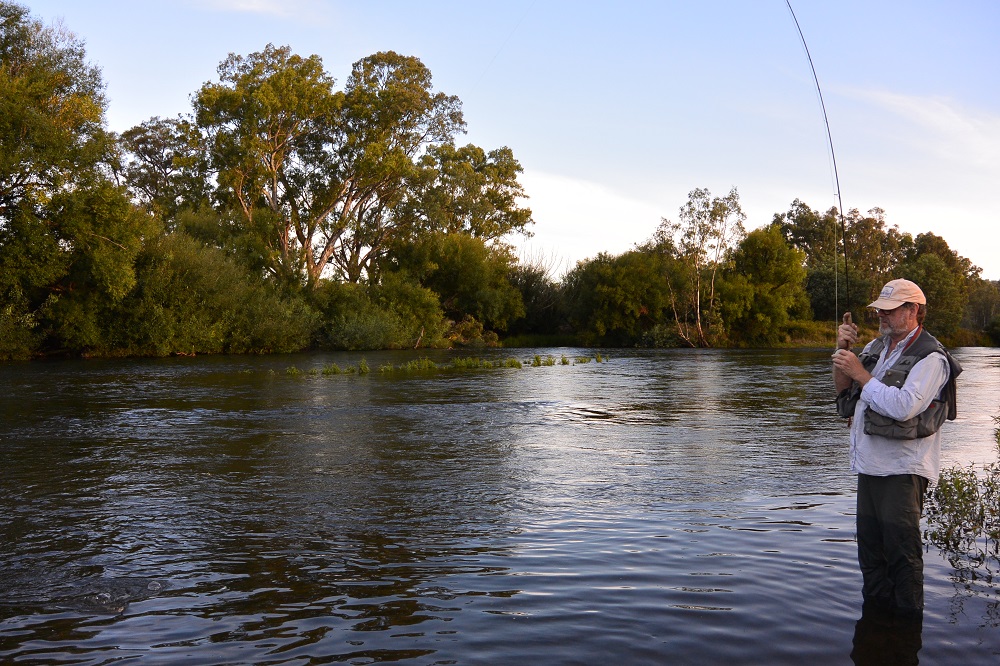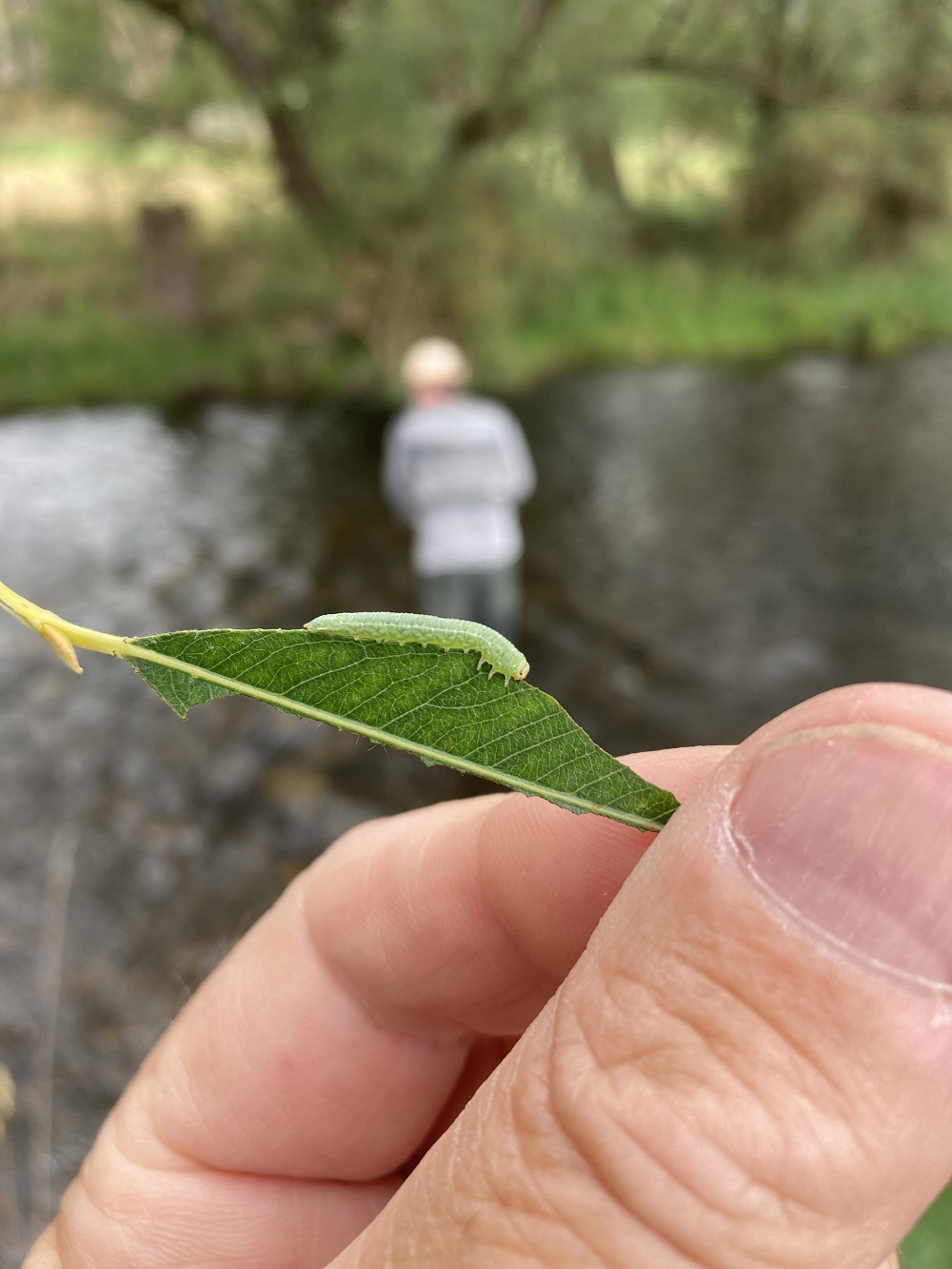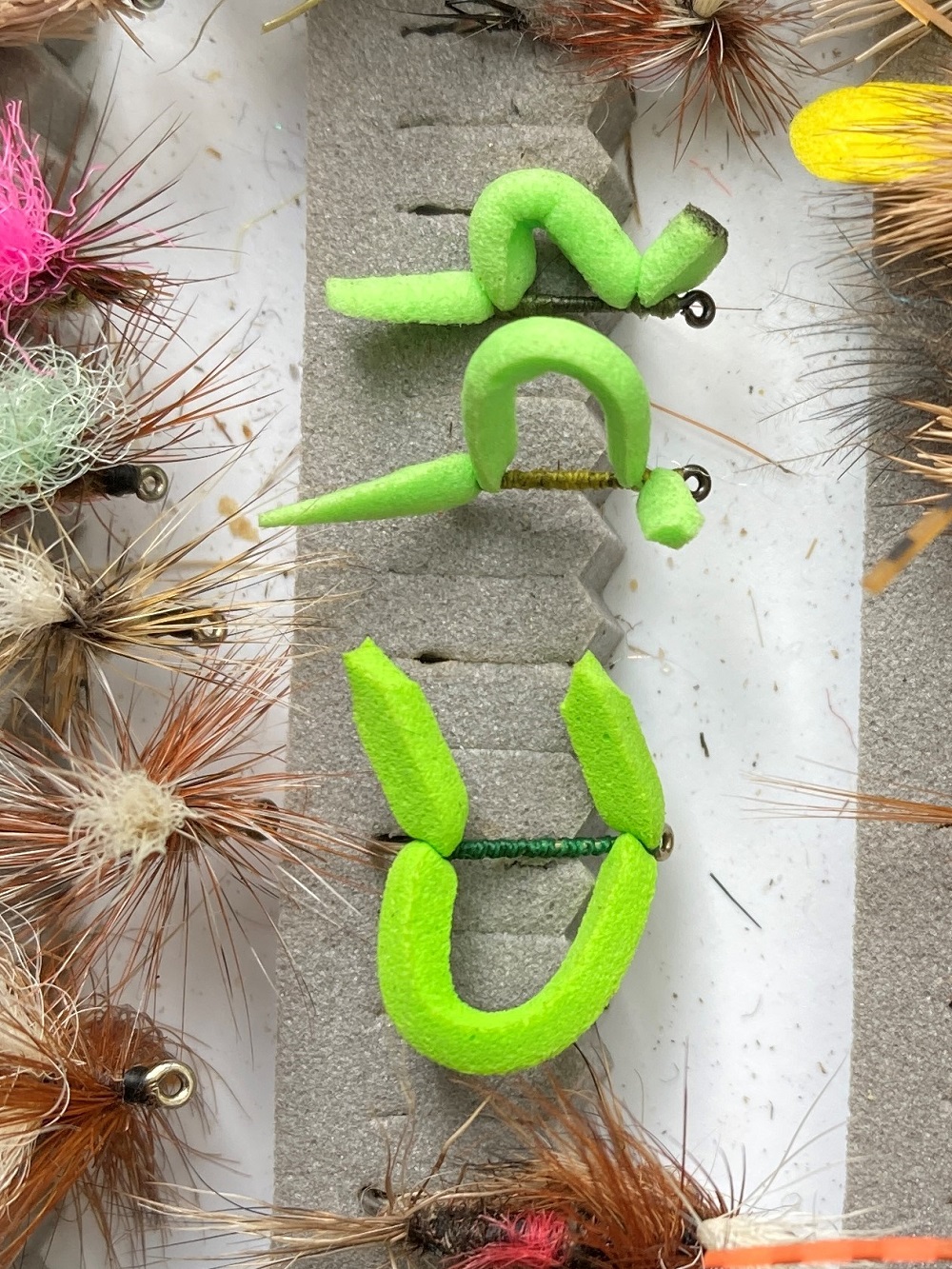
Over the years, willow grubs have come and gone in my flyfishing consciousness. In the mid to late ‘noughties’, they went from being something I was vaguely aware of on New Zealand trips (a smaller grub) to a summer feature which seemingly came from nowhere, particularly on the upper Murray and tributaries, and the Goulburn tailwater and tributaries. I quickly began to associate hot and/or breezy summer days and sick-looking willows, with trout rising in obscure places.
The fascinating thing was, this species of sawfly larvae was as likely to drop into the water away from the usual drift-feeding lanes. Therefore, bits of stream often barely worth a look would suddenly come alive. On the best grub days, you could virtually ignore the classic bubble-lines and feeding lies, in favour of anywhere underneath or immediately downstream of a well-gnawed (but not completely denuded) willow.
For a while, it seemed as if summer willow grub fishing would become a major seasonal event, like hopper time. But then, for me at least, the action seemed to fade. Maybe I was looking in the wrong places at the wrong times; however, it did appear as if the boom time was over. Perhaps some sort of biological control had kicked in. In any event, although I still heard murmurs of grubs, in recent years the rows of foam grub patterns in my fly box went undisturbed.
Then, on a trip to the Goulburn catchment streams earlier in the week with JD, we began to notice some suspiciously willow grub-like feeding behaviour. It was hard to be too focussed though, because the ‘regular’ fishing was very good on streams like the Acheron, Rubicon and Steavenson – including a spectacular evening rise on the Goulburn itself.
During one session, JD gestured excitedly from upstream, and I came to have a look at what he had found. Even to my partially colour-blind eyes, up close the stripped branches were plain to see – and closer still, the plump grubs themselves, browsing on the remaining leaves.
It wasn’t a hot day, but in the next pool, it only took a gust of wind and I immediately spotted a rise in a ‘nothing’ spot well off the current line. I tied on a suitably pale green grub fly from that neglected corner of my box, and plopped it down in the general area of the rise. A good trout immediately charged the artificial and tried desperately to engulf it before the tail-out current snatched the fly away. Far from spooked, the trout clomped it very next cast. The same thing happened twice more on the same pool.
I had forgotten how much trout absolutely love willow grubs. While a Royal Wulff or nymph worked a treat on most fish that trip, if you found a grubber, forget it – only a foam grub would do. Selective feeding at its most obvious.
So, are the willow grubs back on the north-east Victorian rivers as a major event, or are they merely a garnish; a bit of spice to look out for among other more significant flyfishing action? I guess the next few weeks will tell. Either way, it won’t hurt to add a few grub patterns to your box.









